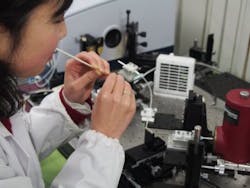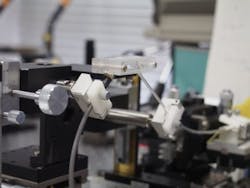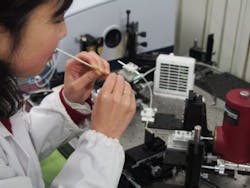Far-infrared light could enable noninvasive blood glucose measurement for diabetes
Researchers at Tohoku University's Graduate School of Biomedical Engineering (Sendai, Miyagi, Japan) have developed a method to measure blood glucose using far-infrared (FIR) light, which is both harmless and noninvasive.
Related: Quantum cascade laser may lead to prickless blood sugar monitoring
Diabetes patients traditionally monitor their daily blood glucose levels by using a conventional meter that requires blood sampling from the fingertips. The discomfort of pain and risk of infection can sometimes be a source of great stress and concern. To address that, other researchers have proposed and developed noninvasive methods for glucose measurement using near-infrared (NIR) light. This method works on the premise that NIR light of some specific wavelengths are selectively absorbed by glucose in the blood, but accurate and stable measurement using this method has proven difficult because NIR light is not only weakly absorbed by glucose, but also by water, protein, and hemoglobin.
In contrast, FIR light with wavelengths around 10 µm is strongly absorbed by glucose, which could make it possible for patients to get more sensitive and accurate measurements. However, the problem faced by researchers is that FIR light penetrates only a few microns from the skin's surface, which makes detection of blood glucose difficult.
So the research team, led by Prof. Yuji Matsuura, developed a new measurement technique that consists of a small prism attached to the ends of flexible, hollow optical fibers to radiate FIR light. By using this method, it is possible to irradiate the oral mucosa of inner lips that, unlike skin, have no thick layer.
Results from experiments show blood glucose levels sensitively detected and accurately measured with <20% margin of error, which Matsuura believes is good enough for clinical uses. By combining the new method with FIR lasers that have recently been developed, he expects compact and low-cost blood glucose measurement systems to soon be widely used in clinical fields.
For more information, please visit www.tohoku.ac.jp/en.
Follow us on Twitter, 'like' us on Facebook, connect with us on Google+, and join our group on LinkedIn


